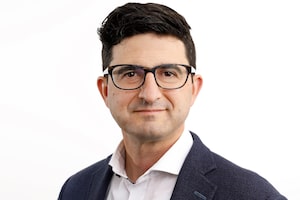D-Wave Quantum Inc. is losing its outside accounting firm after PricewaterhouseCoopers LLP (Canada) informed the financially challenged Canadian quantum computer pioneer it has declined to stand for re-election at the next annual meeting.
D-Wave said in a regulatory filing Tuesday that PwC informed it of the decision to pull out one week ago, but that it had agreed to stay on to review the company’s second-quarter results.
Burnaby, B.C.-headquartered D-Wave, which became a Delaware-domiciled corporation when it went public on the New York Stock Exchange, also revealed that it is moving its principal executive office to the U.S. from Canada and will engage a new public accounting firm based in the U.S.
D-Wave didn’t disclose a reason for PwC’s decision and noted the accounting firm’s reports on D-Wave’s two most recent fiscal years “contained no adverse opinion or disclaimer of opinion.” PwC did state in D-Wave’s 2022 annual report that the company’s net losses, negative cash flows from operating activity and negative working capital “raise substantial doubt about its ability to continue as a going concern.”
D-Wave has spent 24 years developing machines that draw computing power from the quantum effects of subatomic particles, which it has said will one day outperform the world’s most powerful computers.
Its technology still hasn’t reached its full potential but is advanced enough that it earned revenue last year from more than 60 clients, including Mastercard, Deloitte, BASF and grocer Save-On-Foods. They accessed D-Wave’s quantum computing services over the internet to solve complex optimization problems, such as employee scheduling and the launching of loyalty programs. Rival quantum computers won’t be able to do that for years.
But D-Wave is in the early days of building a business, and incurring heavy losses despite having raised more than US$350-million from investors and tens of millions more from the federal government. The company posted revenue of US$1.6-million in the first quarter, down 7.6 per cent year-over year, while operating expenses were US$25.1-million and its net loss was US$24.6-million.
The company has forecast it would generate US$12-million to US$13-million in revenue this year, and that its operating loss this year would be worse than the US$48-million it lost in 2022.
D-Wave went public in August by merging with a publicly listed special purpose acquisition company (SPAC) in the hopes of raising US$340-million. But it only secured a fraction of that, as SPAC investors redeemed 97 per cent of the US$300-million they had paid in. The remaining US$9-million didn’t even cover deal costs.
The pullout by investors left the company facing a severe cash crunch. It secured an equity line of credit last June with Chicago’s Lincoln Park Capital, under which it could draw up to US$150-million in exchange for shares. But if the stock sank below US$1 a share – which it did earlier this year after the lockup on shareholders dating to its go-public deal lifted – D-Wave would be prohibited from using the credit line. The stock has rebounded since bottoming out at US40 cents one month ago, trading above US$2 a share in recent days.
In April, D-Wave secured US$50-million in financing from its largest shareholder, the Public Sector Pension Investment Board, to ease its near-term liquidity crunch. But that deal comes with strings attached, including the requirement to repay PSP if it raises any more from Lincoln Park and to give a security interest to PSP on its intellectual property, along with an IP valuation report.
D-Wave must also raise at least US$25-million in non-dilutive financing – likely in government aid – to secure the final US$20-million from PSP.
Even with the PSP money, D-Wave said in a recent public filing the first US$15-million it received only gives it two months of cash, leaving it a month short of the July 12 date when it can receive its next US$15-million injection.
 Sean Silcoff
Sean Silcoff